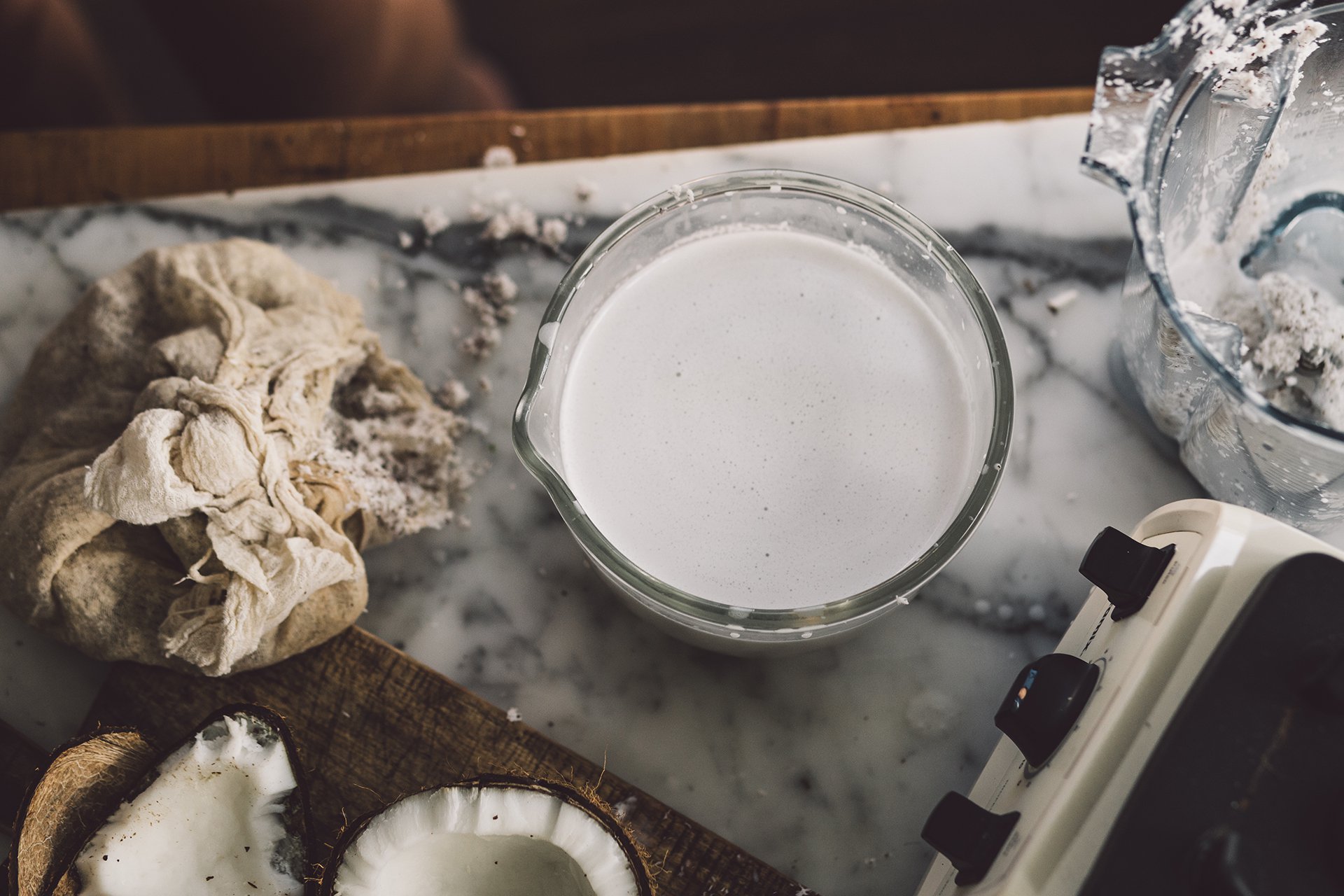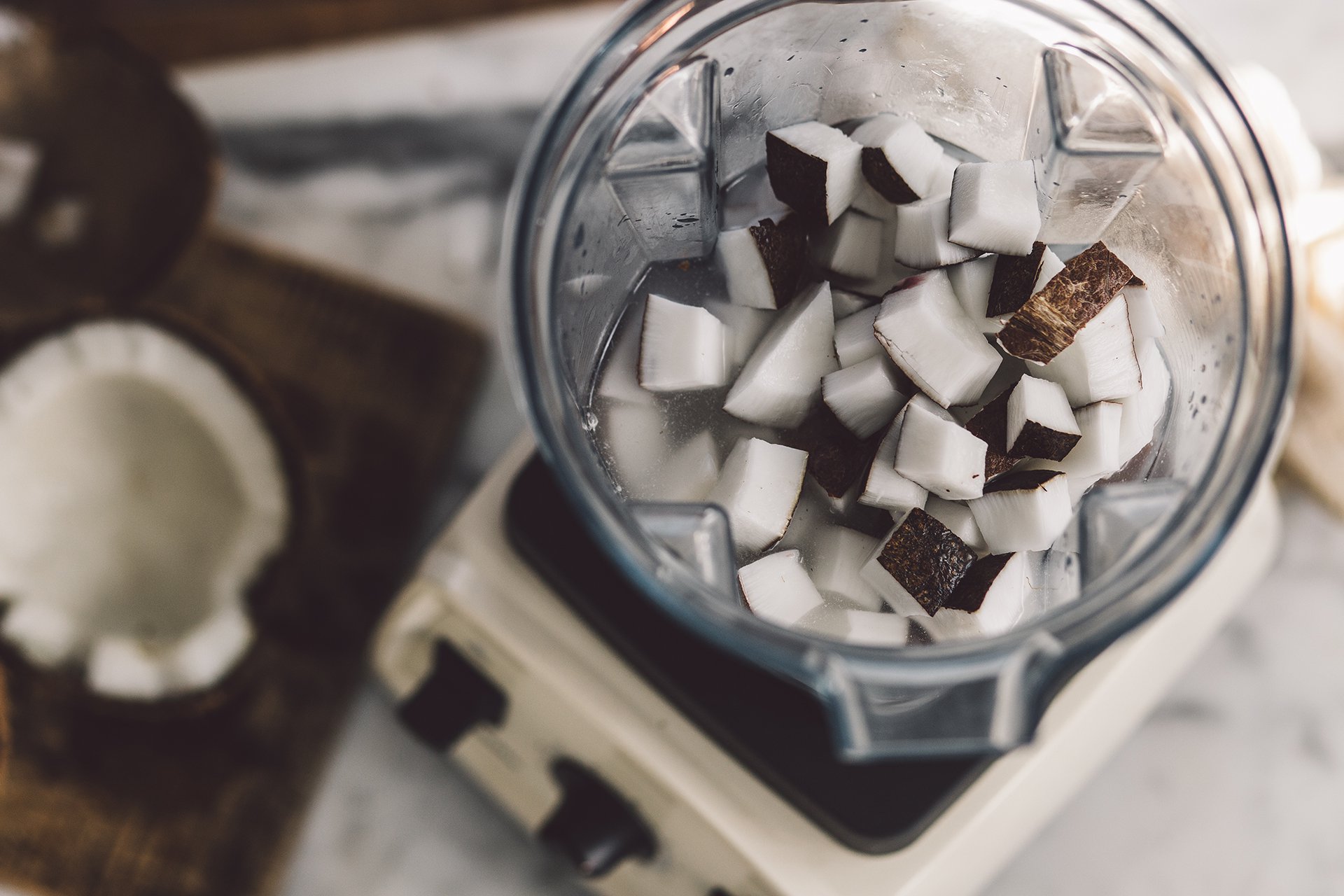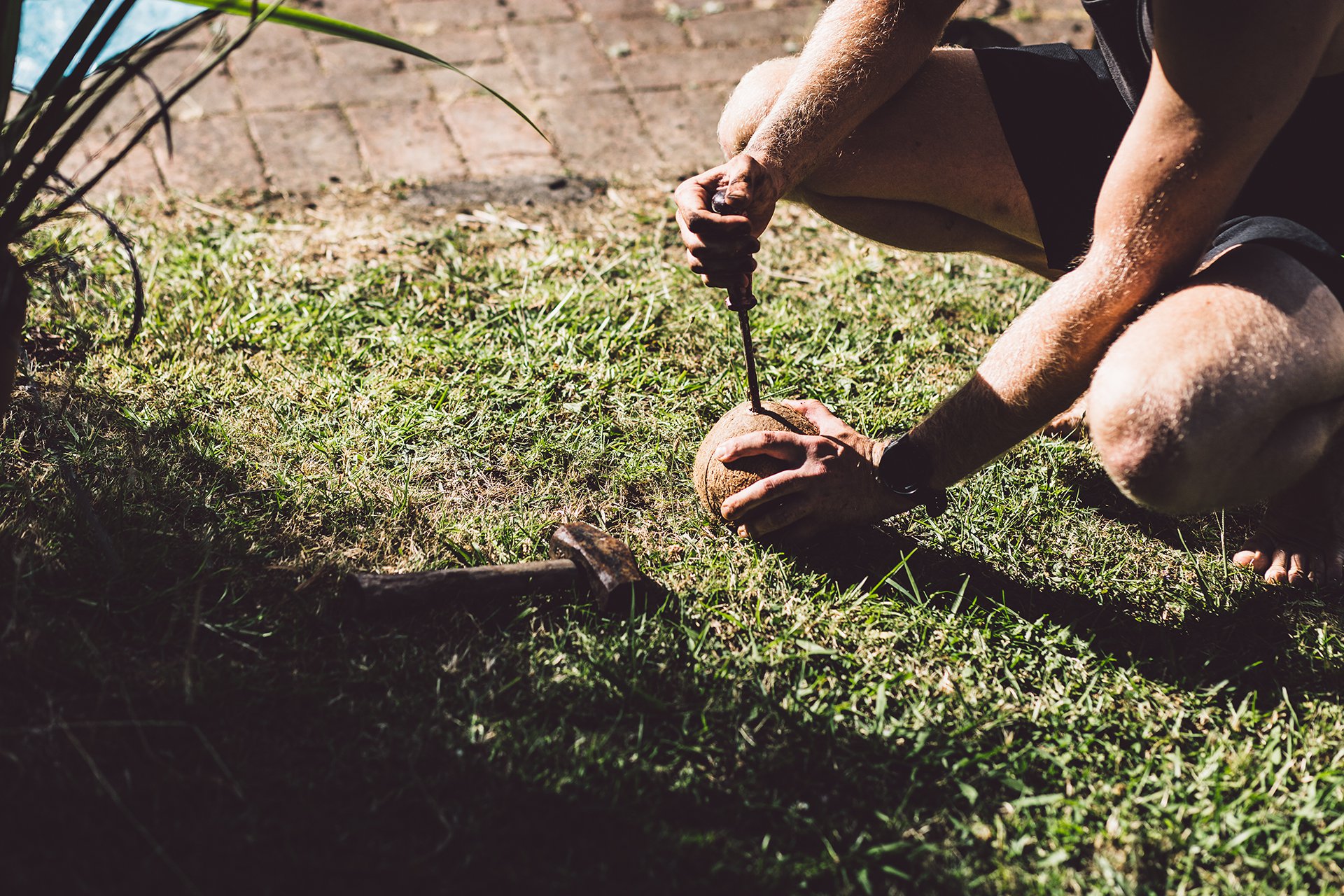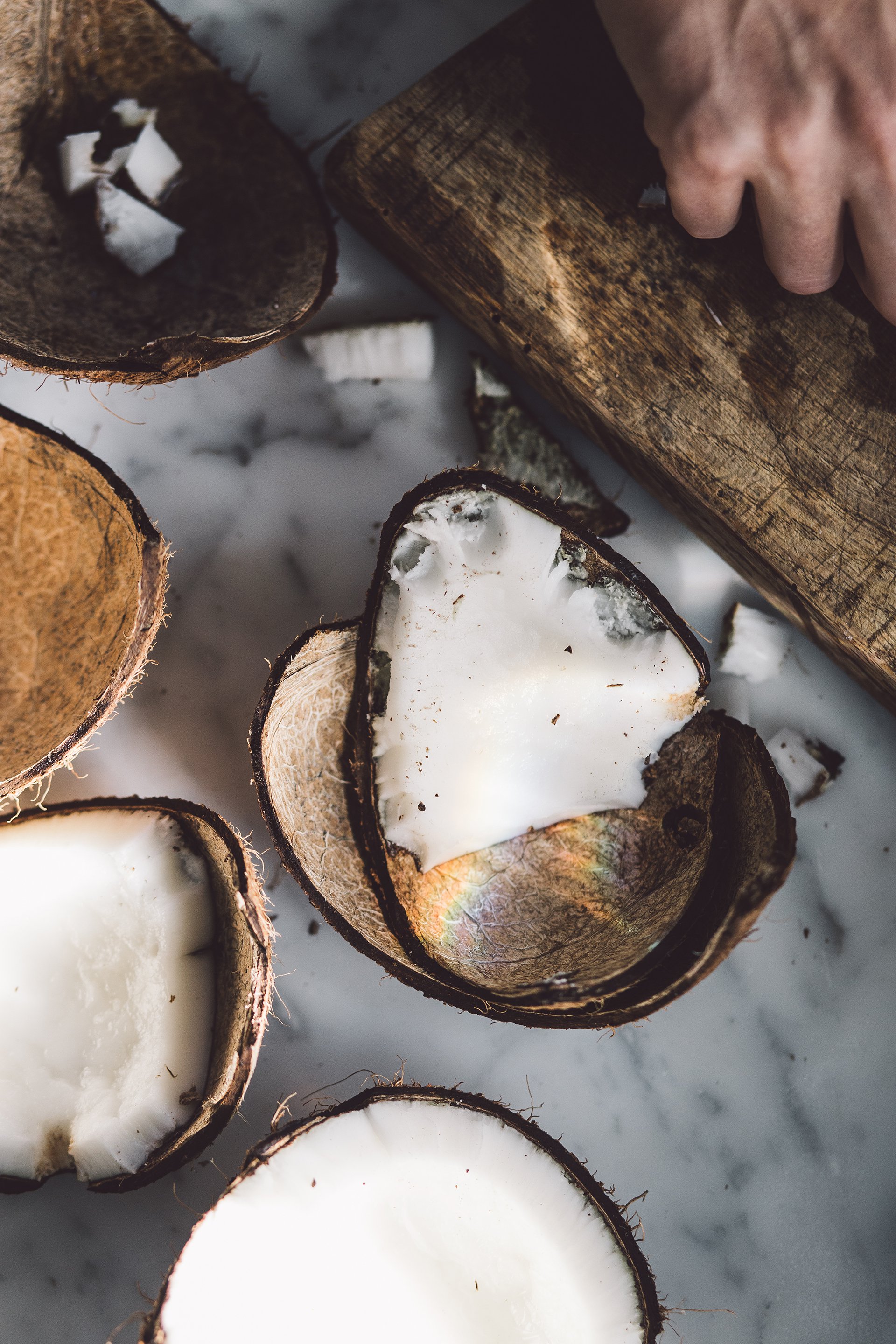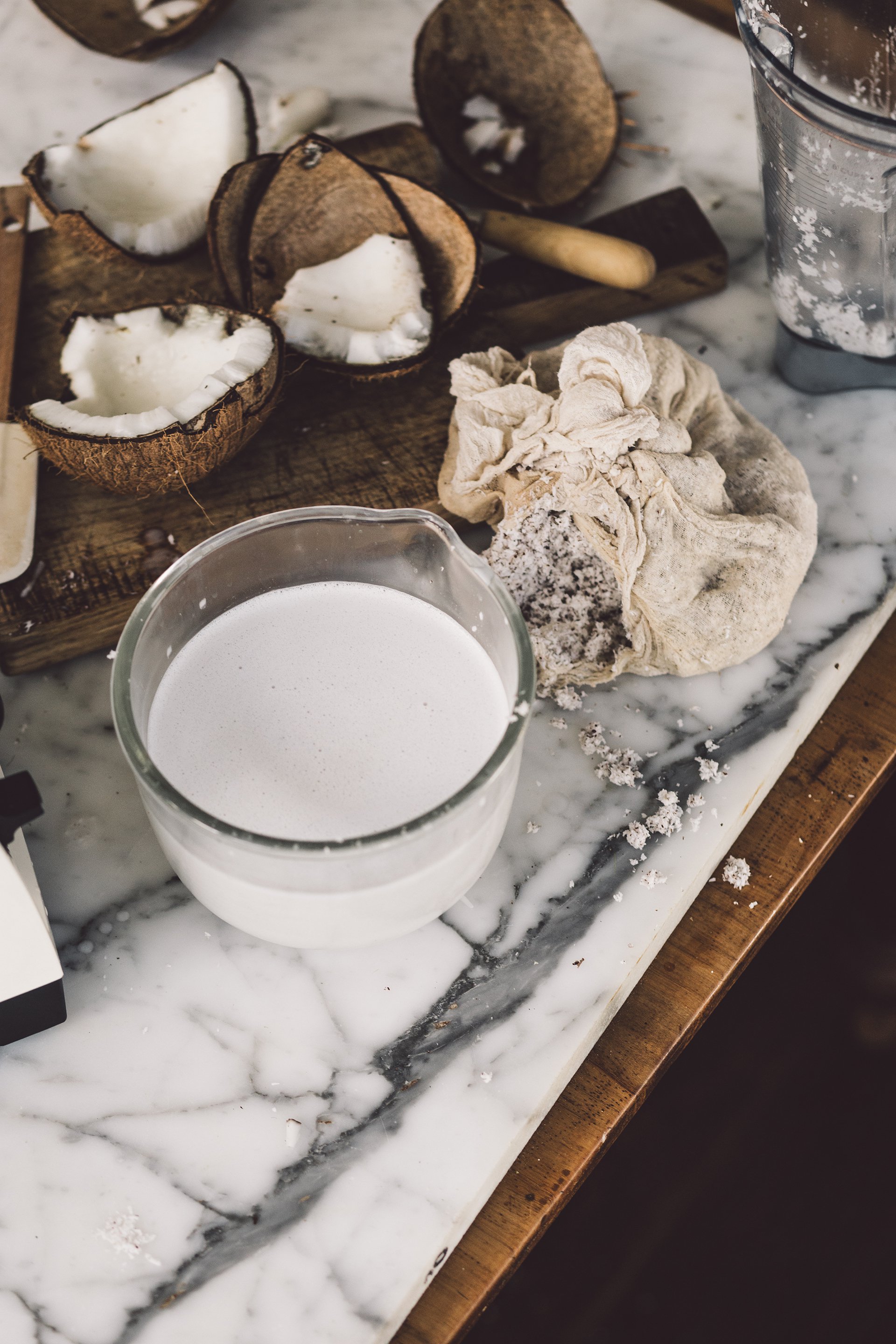The dreamy coconut milk that will make you forget traditional cow milk
This coconut milk made from mature coconut is simple yet delicious. I like its thickness, almost creamy texture, the taste is stronger, fragrant, well balanced between sweet and savoury, with body-loving fat. I don’t drink coffee, and I am not a huge fan of tea, this milk is perfect to kick-off my day drinking a fresh cup mixed with cacao.
When I started eating more plant-based, becoming increasingly aware of the issues surrounding the dairy industry - milk was the first animal product I removed from my diet. I found coconut milk the more respectable replacement, although making my own was problematic - watery and flavourless. The packaged Tetra version? Expensive and equally wasteful, purchasing an industrial product, essentially contributing to global issues I care deeply about.
This coconut milk is surprisingly one of the easiest recipes I ever made, requires roughly 30 minutes preparation, you will obtain an exquisite drink, adjustable to your tastes and recipe requirements. Our coconut produced approximately 2 cups flesh, mixed with 3 cups water, similarly 1 cup flesh to 1½ cups water, providing fresh cow milk consistency. Amazing in coffee, steaming well or for milk chocolate. In the meantime, there are other ratios when seeking different beverage consistencies: optimal milk for desserts, curry, ice cream, basically canned coconut milk; combine 1 cup flesh with 3/4 cup hot water. For Tetra consistency, for light drinks or smoothies, 1 cup coconut to 2 cups water would be ideal.
And the benefits add up: at the time of writing, our local produce supplier Garden For The People sold these coconuts for NZ$3 which yield 1 L of milk when similar quality coconut milk in New Zealand is at least $2 more. Certainly a bonus, there is no need to worry about packaging either. Recipes such as this coconut milk are literally life changer when you struggle between budget, zero waste commitment and eating quality ingredients. We hope you enjoy this homemade coconut milk as much as we did.
Working with raw ingredients like coconuts requires additional preparation, albeit worth the effort. To open your coconut, first identify the three coconut pores similar to brown circles placed on top of the seed. To pierce the pores we found best to use a Phillips screwdriver, coupled with a hammer to help push the screwdriver further into the shell. Piercing two pores will start the coconut water flowing.
